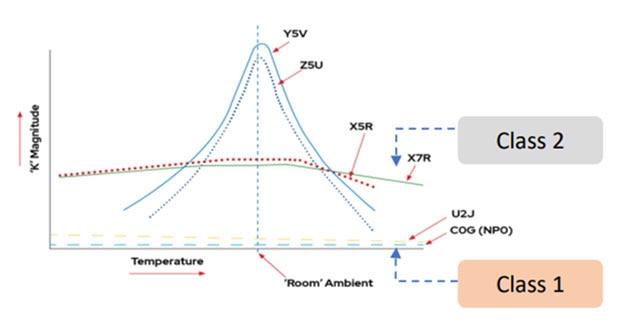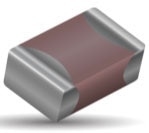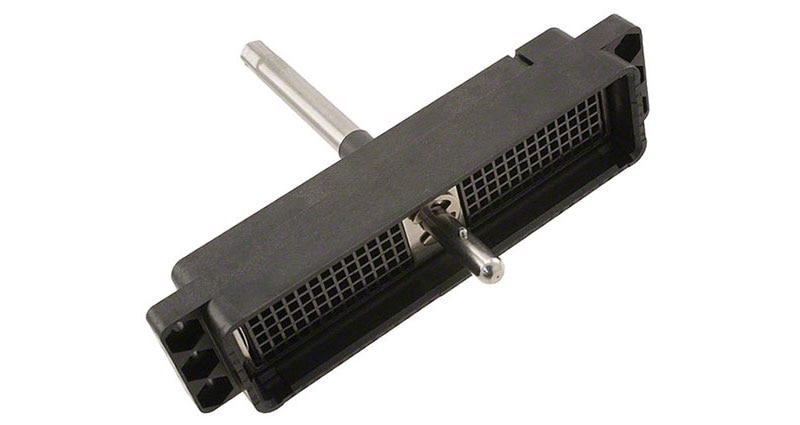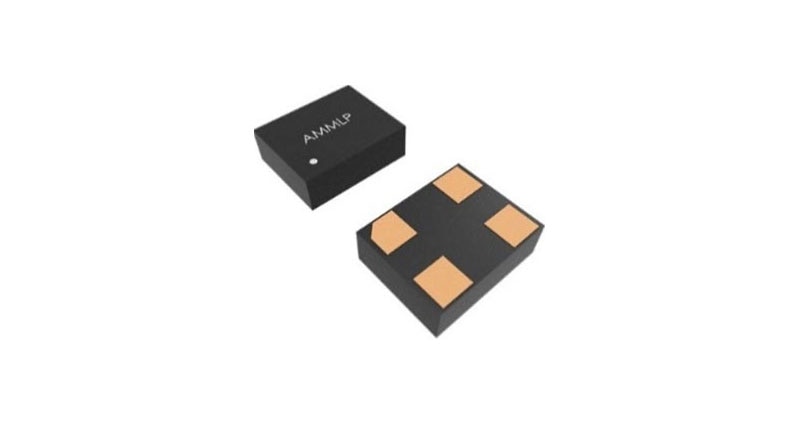C0G MLCC 比薄膜電容更節省空間
薄膜電容以其穩定性、低損耗特性和可忽略不計的壓電效應而聞名,尤其是用於高頻和高精密度的類比應用中。然而,高電壓積層陶瓷電容 (MLCC) 現在可以在溫度穩定性、頻率響應、電壓處理等關鍵層面與薄膜電容相當或甚至超越。許多現代應用以節省空間為主要設計要素,由於 MLCC 的表面黏著封裝尺寸較小,因此明顯成為更佳選擇。
依據 IEC C0G 標準製造、具有 Class 1 介電質的 MLCC 正在佔據傳統上使用薄膜電容的應用,特別是重視尺寸和精密度的諧振電路或汽車電子設備。C0G 標明陶瓷介電值的溫度係數在 -55°C 至 +125°C 範圍內為 0 ± 30 ppm/°C,功能上等同於電子產業聯盟的 Negative-Positive-Zero (NP0) 標準。
Kyocera AVX 的 C0G MLCC 是極穩定的電容,隨溫度、電壓和時間變化最小,對有此需求的設計極具吸引力。適用於重視組件可預測性的電路,例如計時、濾波、阻抗匹配、RF 設計的諧振部分。
MLCC 相對於薄膜的優勢
以塑膠或聚合物薄膜作為介電值的電容具有出色的電壓額定值、低損耗,以及隨溫度變化非常穩定的電容,但通常會比同等的 C0G MLCC 更大且更重。
對 C0G MLCC 的需求量激增,以滿足智慧型手機、平板裝置、筆記型電腦、穿戴式裝置,以及電動車 (EV)、先進駕駛輔助系統 (ADAS)、車用資訊娛樂的要求。這些組件的其他主要市場為航太和國防、電信、工業電子;其電容穩定性對於精準控制和測量非常重要。
現代高電壓 C0G MLCC 表現出高度穩定的溫度特性,在極寬廣的溫度範圍內的電容變化極小。這比 Class 2 MLCC (如 X7R) 穩定得多,並且效能與許多薄膜電容相當甚至超越 (圖 1)。
 圖 1:C0G 電容在整個溫度範圍內比其他介電值更穩定。(圖片來源:Kyocera AVX)
圖 1:C0G 電容在整個溫度範圍內比其他介電值更穩定。(圖片來源:Kyocera AVX)
C0G MLCC 具有極低的等效串聯電阻 (ESR) 和等效串聯電感 (ESI),對電力電子、RF 電路、現代高速數位系統中的效率、散熱、雜訊和穩定性達到良好影響。此外,由高品質 (Q) 因素衡量,其效率更高。
在重視精密度和可靠性的應用中,C0G MLCC 越來越受歡迎,因為能在時間的推移以及溫度波動、濕度、電壓偏壓等環境壓力下保持一致的電氣效能。
Kyocera 彌合差距
在某些應用中,高電流的快速尖波會產生極高的熱,導致薄膜電容的介電值軟化並熔化。如此一來,會降低電容由紅外線輻射散熱的能力,並加速熱故障。
Kyocera 等製造商的元件在效能方面與薄膜電容的差距明顯縮小,同時在尺寸、整合潛力,以及自動化組裝條件下的可靠性也已超越。
Kyocera 的 C0G MLCC 可以取代薄膜電容,適用於許多優先考量尺寸、重量、自動化組裝的設計,如 DC-DC 轉換器、車載充電器 (OBC) 以及汽車或工業電子產品中的精密訊號鏈。C0G MLCC 憑藉高電壓額定值和汽車級可靠性 (AEC-Q200),是引人注目的替代方案,可在更小、更耐用、可擴展的系統設計中達到更高的電容和電壓。
以往,產品設計人員可能會選用薄膜電容作為 DC-DC 轉換器和 OBC,因為它具有出色的高壓額定值、低損耗、強大的自行修復特性。Kyocera 的 C0G MLCC 可在汽車運作條件下提供高度穩定的電氣效能,為緊湊設計提供更小的尺寸和重量,並因低損耗而提高效率,因此可以取代電動車 OBC 中的薄膜電容。
C0G 陶瓷提供目前最穩定的電容介電值之一,在寬廣的工作溫度範圍內不會出現老化特性。因此特別適合注重可靠性、小型化、最佳效能的現代電動車電力電子設備。
Kyocera AVX 的 KAM 汽車 MLCC 系列包括各種電容,這些電容有不同介電材料、電容範圍、額定電壓、外殼尺寸和等其他因素。此公司的 C0G KAM MLCC 非常適合需要穩定電容和低損耗的汽車應用,如 LED 照明、感測器、音訊電路、GPS、安全控制模組、觸控螢幕,但也適用於非汽車應用,包括工業電力系統和可再生能源。
以 Kyocera AVX 的 KAM32LCG2J333JU (圖 2) 為例,此元件具有優異的穩定性,且電容隨溫度、電壓和時間的變化極小。此 MLCC 符合 AEC-Q200 汽車標準,電容為 0.033 µF,額定電壓為 630 V,適用於電動車系統中常見的高電壓環境。尺寸為長 0.126 in x 寬 0.098 in (3.20 mm x 2.50 mm),底座高 0.110 in (2.80 mm)。
 圖 2:Kyocera AVX MLCC 的代表圖片。(圖片來源:Kyocera AVX)
圖 2:Kyocera AVX MLCC 的代表圖片。(圖片來源:Kyocera AVX)
結論
類比、RF 或電源設計重視精密度和穩定性,Kyocera 的 C0G (NP0) MLCC 在寬廣的溫度範圍 (0 ± 30 ppm/°C) 和施加直流偏壓下,其電容變化保持近零。效能穩定使其成為任務關鍵環境的理想選擇,包括汽車、醫療、工業應用。

Have questions or comments? Continue the conversation on TechForum, Digi-Key's online community and technical resource.
Visit TechForum








